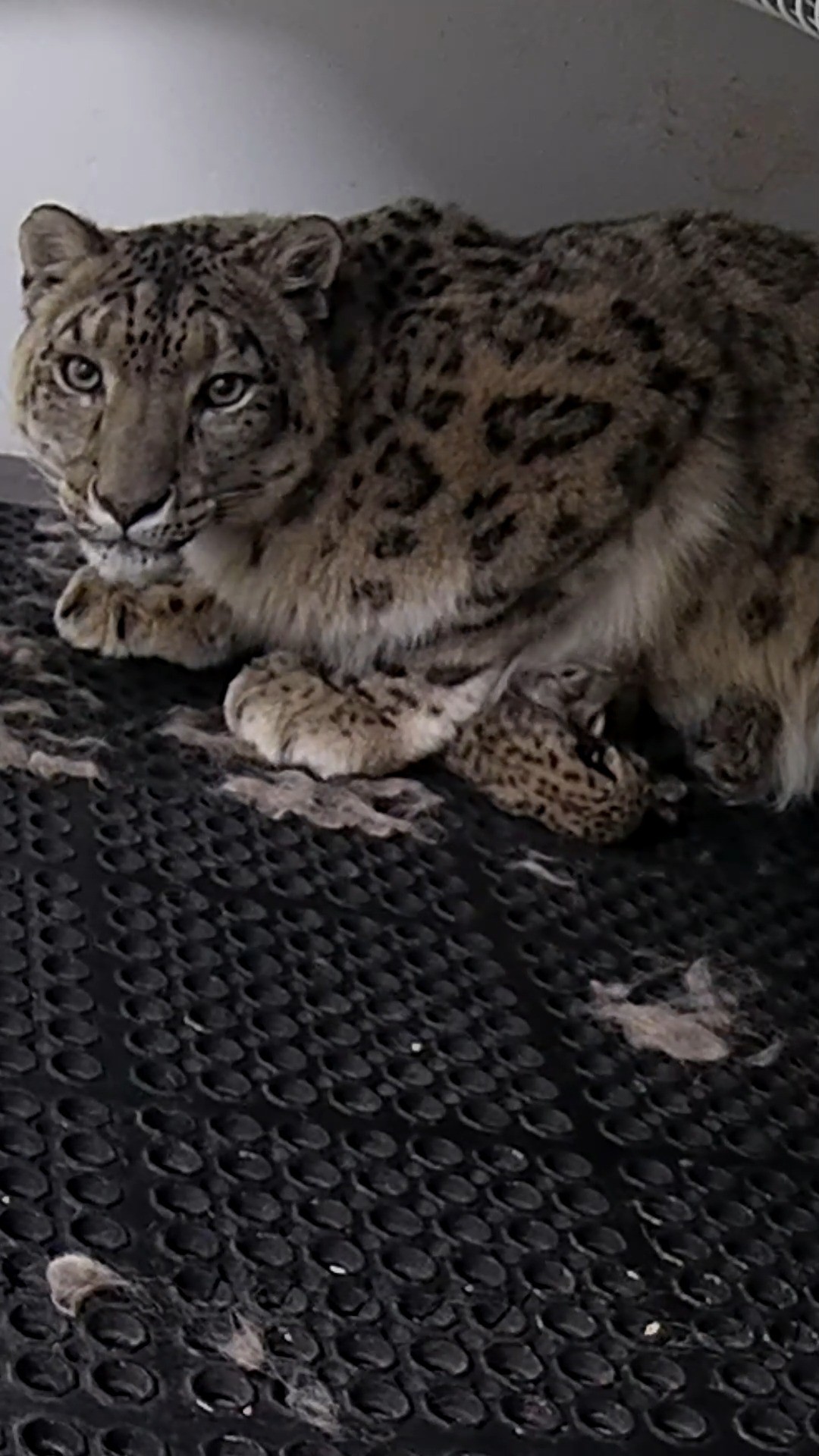- The significance of breeding programs for endangered species like the snow leopard
- Insights into the maternal behavior and care in snow leopards
- The process and protocols of zoo management in animal reproduction and welfare
- The role of vaccinations and medical care in wildlife conservation efforts
- Public engagement and educational opportunities emerging from snow leopard conservation
The birth of three snow leopard cubs, two females and a male, marks a momentous occasion for conservationists and animal enthusiasts worldwide. These magnificent creatures, native to the mountain ranges of Central Asia, have been listed as vulnerable by the International Union for Conservation of Nature (IUCN), with an estimated population of fewer than 10,000 mature individuals. The joy accompanying such an event is intensified by the knowledge that each successful birth helps secure the species’ future.
Snow leopards are elusive animals, and their reproductive habits have been challenging to study in the wild. In zoos, caretakers and scientists can observe these animals closely. The mother, Elsa, displays an intense protective and nurturing instinct towards her cubs, as seen in her care for the newborns. In their natural habitat, snow leopard mothers are solitary and go to great lengths to conceal their dens from predators, a behavior emulated in the secure and private enclosures provided by the zoo.
For zookeepers and biologists, managing the reproduction of endangered species is a complex and delicate task. It involves constant monitoring of the animals’ health, maintaining genetic diversity through careful selection of mating pairs, and ensuring that the conditions for mating, pregnancy, and birth are as close to the natural environment as possible. The ultimate goal is to raise healthy cubs capable of one day contributing to the genetic pool, whether in managed care or potentially reintroduced into the wild.
Vaccinating these rare animals is a crucial component of the conservation puzzle. Vaccinations protect them from diseases that could be devastating to their small populations. It’s not just about giving the shots; it’s about understanding the creatures’ unique biology, monitoring their immune response, and ensuring they’re in the best possible health to survive and thrive. This medical care is administered with as little stress to the animals as possible, another testament to the zoo’s commitment to animal welfare.
Part of the beauty of conservation work within zoos is the ability to engage the public and raise awareness about the plight of these magnificent animals. The birth of snow leopard cubs can serve as an educational platform, drawing visitors and attention to the remarkable efforts to save them. Through programs and presentations, zoos provide invaluable insights into the lives of these felines and inspire future generations to participate in conservation efforts.
To summarize, the birth of snow leopard cubs in zoological settings symbolizes hope and progress in the ongoing battle to conserve this species. It demonstrates humanity’s potential to positively influence endangered species’ survival through science, care, and education. The arrival of these cubs is not just a celebration of new life but a beacon of what can be achieved when dedication to wildlife conservation is coupled with informed, science-based strategies and passionate public support.
*****
Source Description
La cigogne est passée chez les léopards des neiges! 😍🎉
C’est avec un grand bonheur que nous partageons avec vous la naissance de 3 léopardeaux des neiges, soi 2 femelles et 1 petit mâle. Maman Elsa se porte bien et prend un soin jaloux de ses petits. 💙 Pour le moment, la petite famille est isolée à l’intérieur du bâtiment, question de donner toute la quiétude nécessaire à la jeune maman pour renforcir le lien qui les unis. La première sortie à l’extérieur ne sera planifiée que lorsque les petits seront suffisamment vigoureux et qu’ils auront reçu leurs vaccins: nous vous tiendrons informés de leur évolution!
Il s’agit d’une 2ème expérience de la maternité pour notre belle Elsa, qui avait mis au monde la femelle Jita en 2021, qui nous a quitté pour The Toronto Zoo l’automne dernier et qui à son tour a donné naissance à 2 petits le 13 mai dernier ! Il s’agit d’une célébration extraordinaire des efforts de conservation qui sont déployés en milieu zoologique pour la survie de l’espèce! class=”instagram-media” data-instgrm-permalink=”https://www.instagram.com/reel/C7P9cp5MD0k/” data-instgrm-version=”14″ style=” background: border:0; border-radius:3px; box-shadow:0 0 1px 0 rgba(0,0,0,0.5),0 1px 10px 0 rgba(0,0,0,0.15); margin: 1px; max-width:540px; min-width:326px; padding:0; width:99.375%; width:-webkit-calc(100% – 2px); width:calc(100% – 2px);”>

